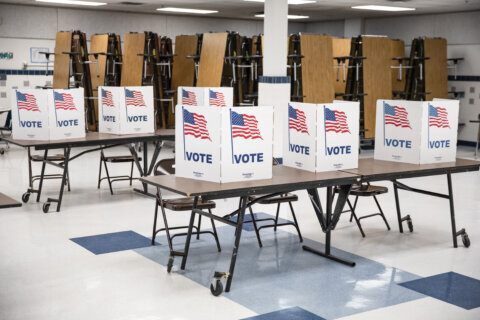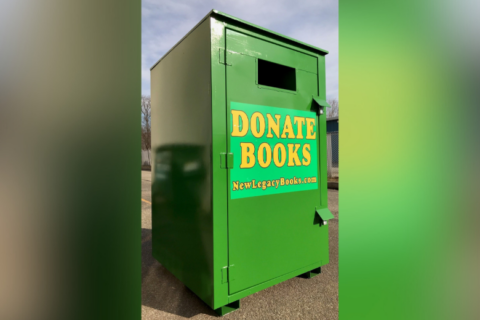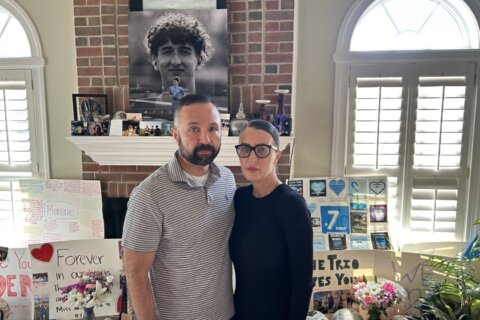WASHINGTON — The outlines of new designs for toll lane ramps to and from Interstate 66 emerged Tuesday in a presentation to the Fairfax County Board of Supervisors.
Some of the ideas, such as additional ramps at U.S. 50 or Nutley Street, are in such early stages that they were only illustrated in the presentation by arrows roughly indicating the travel direction.
Those early-stage ideas include entrances and exits for the toll lanes at Prince William Parkway; a ramp from the northbound Fairfax County Parkway to the westbound toll lanes; a reconfiguration of the Va. 28 interchange; and access from the regular I-66 lanes to the toll lanes near U.S. 50.
A number of those ideas are not yet on the project’s website, VDOT Megaprojects Director Susan Shaw said, because they have not been developed and reviewed yet.
“They still are at a conceptual level, so you can see some detail but not certainly the design detail that you would expect to see as we move forward in this process,” Shaw said.
Other concepts that were part of the private Express Mobility Partners’ plans that won the contract last year are further along.
New revisions to those plans include moving a ramp and stormwater ponds at the Capital Beltway to require less property be taken.
Those living in three homes that might theoretically be saved by the ramp change should still be given the option to sell their property to the Virginia Department of Transportation given the noise impacts, Fairfax County Supervisor Linda Smyth suggested.
Eight other homes are still slated to be taken by the project.
“We have had a lot of changes in a fairly compressed timeframe,” Smyth said, asking for more specifics.
“For heaven’s sakes, we’ve got to see a lot more, and we need something by June 12 to be looking at frankly besides what we’ve got,” Smyth said.
Other proposed changes would add an entrance and exit to the HOV or toll lanes to and from the west at Va. 123 and reconfigure the designs at U.S. 50, and add access points from the regular I-66 lanes at U.S. 29 in Centreville.
The plans will be part of public meetings through June, including official public information meetings June 12, 14 and 15. Those meetings are meant to be question-and-answer sessions, with the final formal public hearing scheduled this fall after design plans are refined.
“Any ideas that are on the table we will have available at that meeting. Some might just be a stick drawing, but we’ll just be letting people know right now all we can show is a stick drawing. If we have more detail than that, we’ll show more of the detail,” Shaw said.
Changes in progress include finding a new location for a Metro power substation after Gov. Terry McAuliffe announced on WTOP last month that a flyover ramp in the Dunn Loring area would not be built because of opposition from neighbors.
Any changes from the original contract agreed to by Virginia and the private companies building the lanes could lead to negotiations over who gets the benefit or pays the costs.
Tweaks requested by local jurisdictions, for example, that have the potential to reduce toll revenue or increase costs could be funded out of the payment the company promised for other roadway or transportation improvements in the corridor.
Fairfax County supervisors remain concerned about the decision to allow trucks to use the toll lanes, but changing that would reopen negotiations potentially to the tune of $1 billion over the life of the contract. The county is set to ask that trucks not be allowed to use the ramp to or from Vaden Drive.
Next week, the board expects to sign off on a separate list of projects the county hopes will be funded by the concession payment.
While supervisors seemed frustrated that there was not more information available, Shaw said the massive scale of the project means things take time. She estimated the project would entail $20 million of construction per month when it is fully underway next year.
Plans call for two toll lanes in each direction between Gainesville and the Beltway that will be free for drivers with three or more (total) people in the car and an EZ-Pass Flex switched to HOV mode.
The speed limit in the lanes would be 70 mph, with a transition zone as the lanes near the Beltway that would reduce speeds to 55 mph.
Inside the Beltway, a separate state-run toll system is due to begin later this year, but that applies only during an expanded rush hour period and only eastbound in the morning and westbound in the afternoon.
That toll system will be free for drivers with at least one other person in the car and an EZ-Pass Flex switched to HOV mode until a planned switch to require at least three people total in the car for a free ride when the toll lanes outside the Beltway open in 2022.
Editor’s note: Due to incorrect information given to WTOP, this article has been updated to reflect that at the peak of construction, $20 million of work is expected each month, not per day.







